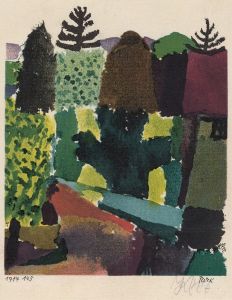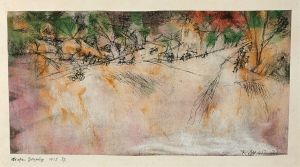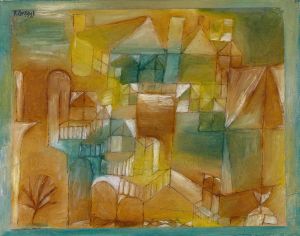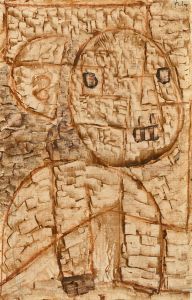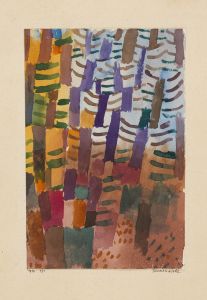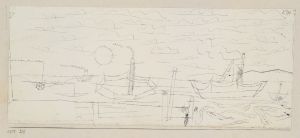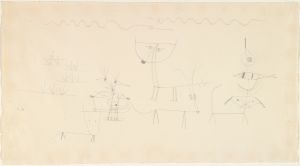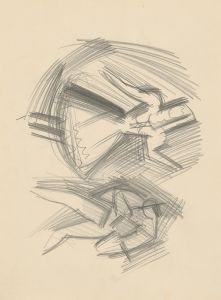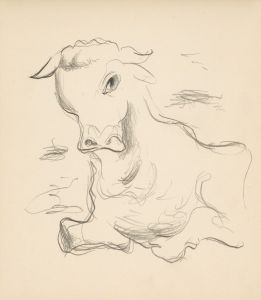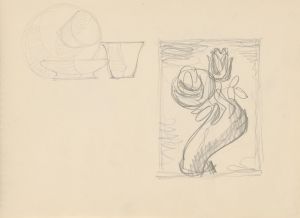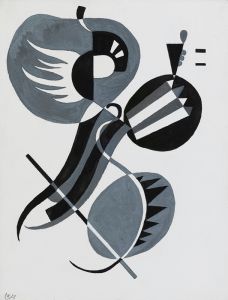
Zwei Lustschlösschen
A hand-painted replica of Paul Klee’s masterpiece Zwei Lustschlösschen, meticulously crafted by professional artists to capture the true essence of the original. Each piece is created with museum-quality canvas and rare mineral pigments, carefully painted by experienced artists with delicate brushstrokes and rich, layered colors to perfectly recreate the texture of the original artwork. Unlike machine-printed reproductions, this hand-painted version brings the painting to life, infused with the artist’s emotions and skill in every stroke. Whether for personal collection or home decoration, it instantly elevates the artistic atmosphere of any space.
Paul Klee, a Swiss-born artist, is known for his highly individual style that was influenced by movements in art that included Expressionism, Cubism, and Surrealism. One of his works, "Zwei Lustschlösschen," which translates to "Two Pleasure Palaces," is a notable piece that reflects his unique approach to art. Klee's work often features a blend of abstraction and figuration, and "Zwei Lustschlösschen" is no exception.
Created in 1922, "Zwei Lustschlösschen" is a watercolor and ink on paper piece that showcases Klee's mastery of color and form. The painting is characterized by its playful yet structured composition, a hallmark of Klee's work during this period. The title suggests a whimsical or fantastical theme, which is a common thread in Klee's oeuvre. His works often explore themes of fantasy, dreams, and the subconscious, drawing viewers into a world that is both familiar and otherworldly.
Klee's use of color in "Zwei Lustschlösschen" is particularly noteworthy. He was known for his innovative use of color theory, which he developed during his time teaching at the Bauhaus, a revolutionary art school in Germany. In this painting, Klee employs a vibrant palette that includes shades of red, blue, and yellow, creating a sense of harmony and balance. The colors are applied in a way that suggests movement and depth, inviting the viewer to explore the intricate details of the composition.
The structure of "Zwei Lustschlösschen" is also significant. Klee often used geometric shapes and lines to create a sense of order within his works. In this painting, the two "pleasure palaces" are depicted using a series of overlapping shapes and lines, which create a sense of architectural form. This approach reflects Klee's interest in the relationship between art and architecture, a theme that he explored throughout his career.
Klee's work is often described as a visual language, and "Zwei Lustschlösschen" is a prime example of this. The painting communicates a sense of joy and wonder, inviting viewers to interpret its meaning in their own way. Klee believed that art should be an expression of the artist's inner world, and his works often reflect his personal experiences and emotions.
"Zwei Lustschlösschen" is housed in a private collection, making it less accessible to the public compared to some of Klee's other works. However, it remains an important piece in understanding Klee's artistic journey and his contributions to modern art. Klee's influence can be seen in the works of many contemporary artists, and his innovative approach to color and form continues to inspire new generations.
In summary, "Zwei Lustschlösschen" by Paul Klee is a testament to the artist's unique vision and his ability to blend fantasy with structure. Through his use of color, form, and composition, Klee creates a work that is both playful and profound, inviting viewers to explore the depths of their own imagination.





